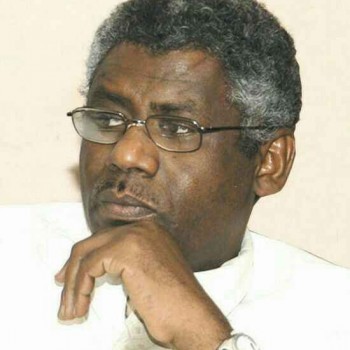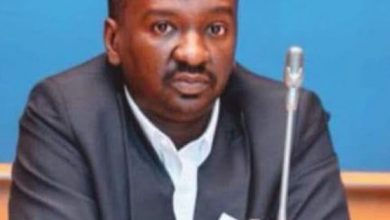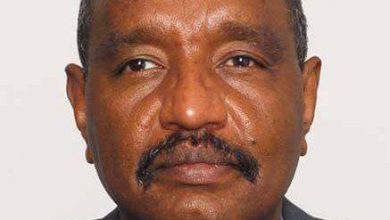Sudan’s War Variables

By: Adil El-Baz
Sudan’s contemporary history has witnessed the longest African war, the South Sudan War, which lasted nearly fifty years. It stopped for a decade (1973 – 1983), when the Addis Ababa Agreement was signed between the Anyanya II movement and the government of Jaafar Numeiri in 1972.
The war soon broke out again in the south in 1983, and continued for more than three decades, and stopped following the signing of the Comprehensive Peace Agreement (CPA) in 2005, in the Naivasha suburb of the Republic of Kenya. However, the war that began in April last year is of a different nature, and witnessed unprecedented changes in the history of wars in Sudan, which will result in different results at all levels. Politically, economically and socially.
In previous wars, the Sudanese army was fighting its battles against rebel groups and movements, whether in southern or western Sudan, and those rebel movements always relied on foreign countries for their arming and financing of war. The Darfur movements, for example, relied on Libyan support during the days of Gaddafi and after, and until before the outbreak of the war in April of last year.
It also relied on the support of various Chadian governments in its ongoing conflict with Sudan. The Sudan People’s Liberation Army (SPLA) , led by John Garang, also relied mainly on Western support in its war over different times, and on the support of African regimes sympathetic to it.
The current war has witnessed several changes; The first is that the rebel forces this time (the Rapid Support Forces (RSF)) were regular forces with their constitutional and legal status stipulated in the Armed Forces Law, and were funded and armed by the State, which means that the two warring armies are now fighting their war with the resources of the Sudanese State.
It is true that after the outbreak of the war, both parties searched for external funding and armament. However, after the outbreak of the war, the RSF received significant external support, financing, and various and advanced weapons from several countries outside the African region, whose role became a facilitator and conduit for supplies and equipment. For the first time in the history of wars in Sudan, the State has funded rebels against it and its regular army from its resources.
The most important changes in the April war, which has now nearly been a year, is that it broke out in the heart of the capital, Khartoum, for the first time in the history of the multiple rebellions that Sudan witnessed, and then its spark spread to eight states: five states in the west, and three in the north: (Kordofan, Khartoum, and Gezira ).
Rebel movements often started their wars from the far margins, and rarely extended to the heart of the capital, Khartoum. The only time the spark of marginal wars reached Khartoum was in 2008, when the Justice and Equality Movement forces were able to reach Omdurman, coming from the western border of Sudan.
In the experience of the current April war, the rebel forces did not come to Khartoum as invaders, but rather were part of the security system entrusted with securing the Sudanese capital, Khartoum, and therefore they took over all strategic government headquarters without resistance from the first hours of the war, and found the leadership of the State represented by President Al-Burhan. Army leaders said that state institutions had been swallowed up by those charged with guarding them (the RSF).
Over the past fifty years, no forces rebelling against the State have approached the Republican Palace, or the General Command, in seventy years, the lifetime of the rebel movements in Sudan.
The variable that will have a major impact in the near and distant future is the ethnic and regional dimensions of this war. In the conflicts and wars that Sudan witnessed in its history, tribal and ethnic alignment was not as present as it is in this war.
Since the first days of the war, the Rapid Support Forces (RSF) have tried to create tribal and regional alignment by mobilizing their social circles in western Sudan, with hostile statements against northern citizens, such as the Jellaba: (northern merchants in western Sudan), then later the remnants: (supporters of the former regime), and then finally Naming some tribes in northern Sudan and classifying them as enemies. The RSF succeeded in winning over some tribes to align with them against the Sudanese army. Although its efforts did not achieve complete success, it succeeded in attracting some components of the tribe on an ethnic and regional basis.
Sudan’s prolonged wars were mainly fought outside the cities, and the Sudanese countryside or marginal areas were the most affected, but the April 15, 2023 war took place in more than one state and region, and therefore had a significant impact on the population.
Although the rural areas and distant states were the main scene of these wars and witnessed major violations in the wars, the atrocities that occurred in the current war are unprecedented in terms of their breadth in scope and the multiple types of crimes of killing, plundering, rape and occupation. These crimes spread throughout the villages and cities, and the rebellion did not leave an inch of any area it entered without serious violations, reaching in some areas the point of genocide, as happened in El Geneina city, one of the most important cities in western Sudan, where more than fifteen thousand people were killed in one day. Some of them were buried alive, as the same city witnessed and its governor, Khamis Abkar, was killed as the most heinous crime committed by the RSF in their current war.
All wars in the history of Sudan had a devastating economic impact and affected all sectors, and the State continued to finance those wars from its budget with deficits and foreign debt, which led to a continuous deterioration in the value of the currency, and thus the macroeconomic situation.
The economic impact of the ongoing war has been the most destructive and devastating to the Sudanese economy beyond comparison to what happened in previous wars. This war destroyed existing economic institutions of all kinds: (industrial, agricultural, service), through looting, burning, and direct destruction. Almost all institutions of the economic sector, including banks, companies, and factories belonging to the State, the private sector, or foreign investment, were subjected to comprehensive destruction, an unprecedented situation as well, due to the outbreak of war in the capital, the financial and economic center in which all industrial and service institutions and major companies are concentrated.
Multiple reports have been issued about the size of the losses caused by the current war, but the statements issued by Lieutenant General Ibrahim Jaber – one of the most important leaders of the army in the economic aspect – were remarkable, as he estimated the economic losses of the war so far at $150 billion, which is equivalent to almost all oil income revenues. Since its extraction in the late 1990s, gold revenues have been added to it over a quarter of a century. In addition, this war consumed most of the Sudanese’s savings abroad, and wiped out much of their property at home.
The new element in this war as well is the massive entry of technology into the work of this war in a way that was not witnessed in previous wars. For the first time, specific weapons were used that had never been used in previous wars, the most important of which were drones capable of hitting the target accurately and flying in the air for long hours.
Modern drone technology had an effective impact in making a difference in the field, as the armed forces were able to use it extensively and skillfully, making a difference in a short time in most battlefields, and it had its most prominent role in the battle of Sudanese Radio at the beginning of this March, which the army recently won. Had it not been for the intervention of those drones in the battles, the ongoing war across Khartoum State would have been more complex and would have taken many times longer to be resolved than what is happening now.
There are many external variables: the most important of which is that for the first time, the international community, Arab and African countries collectively take a negative position on a war launched by forces that rebelled against the Sudanese state. In all previous experiences, the positions of countries differed between supporters of the rebellion and opponents of it, and supporters of the Sudanese State and its legitimate authority.
In this war, most African countries supported the rebellion, and even supported it in various ways, from passing weapons, to opening training camps, to direct financial support.
While the positions of the Arab countries were extremely negative towards what was happening in Sudan, some countries assumed financial and military support and fully financed the war, others remained silent, and a third adopted the role of mediator, while the position of the international community was biased since the beginning of the war and supportive of the rebellion.
The international community’s movements began early in the second month of the war, through the establishment of the Jeddah Platform, until two months ago in what was known as the Manama Meeting, in which Sudan denied all of its outcomes. The position of the international community was also evident in calls to stop the war, which was in its early days. The Security Council and regional organizations were used to impose a settlement that would reposition the RSF in Sudanese political and military life again.
This war, with the intensity of the variables that occurred in it and the effects that resulted from it, will lead to changes at all levels: political, economic, and social. Post-war Sudan will witness changes in the structure of the ruling authority and its management methods for the transitional period. It will also lead to new alignments between political parties and alliances, and will bring new players to the political scene, represented by civil society organizations and new youth parties, in addition to the components of civil society that are now rising.
We will also witness changes in the structure of the economy and a new arrangement of economic institutions in terms of their geographical distribution, the diversity of their activities, and the methods of financing them. Foreign relations will also witness change and new classifications in light of the different positions on the war at all levels. The ethnic and regional alignment witnessed in this war will take a long time for the Sudanese to recover from the deep wounds caused by the repercussions of the war.



